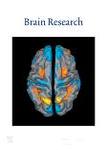版权所有:内蒙古大学图书馆 技术提供:维普资讯• 智图
内蒙古自治区呼和浩特市赛罕区大学西街235号 邮编: 010021

作者机构:Univ Libre Bruxelles Fac Motor Sci Lab Appl Biol B-1070 Brussels Belgium Univ Colorado Dept Integrat Physiol Boulder CO 80309 USA
出 版 物:《BRAIN RESEARCH》 (脑研究)
年 卷 期:2011年第1409卷
页 面:42-61页
核心收录:
学科分类:1002[医学-临床医学] 1001[医学-基础医学(可授医学、理学学位)] 10[医学]
基 金:Fonds National de la Recherche Scientifique of Belgium Research Council of the Universite Libre de Bruxelles National Institute of Neurological Disorders and Stroke [NS43275] National Institute on Aging [AG009000]
主 题:History Electrophysiology Motoneuron Rate coding Recruitment Spinal cord
摘 要:Soon after Edward Liddell [1895-1981] and Charles Sherrington [1857-1952] introduced the concept of a motor unit in 1925 and the necessary technology was developed, the recording of single motor unit activity became feasible in humans. It was quickly discovered by Edgar Adrian [1889-1977] and Detlev Bronk [1897-1975] that the force exerted by muscle during voluntary contractions was the result of the concurrent recruitment of motor units and modulation of the rate at which they discharged action potentials. Subsequent studies found that the relation between discharge frequency and motor unit force was characterized by a sigmoidal function. Based on observations on experimental animals, Elwood Henneman [1915-1996] proposed a size principle in 1957 and most studies in humans focussed on validating this concept during various types of muscle contractions. By the end of the 20th C, the experimental evidence indicated that the recruitment order of human motor units was determined primarily by motoneuron size and that the occasional changes in recruitment order were not an intended strategy of the central nervous system. Fundamental knowledge on the function of Sherrington s common final pathway was expanded with observations on motor unit rotation, minimal and maximal discharge rates, discharge variability, and self-sustained firing. Despite the great amount of work on characterizing motor unit activity during the first century of inquiry, however, many basic questions remain unanswered and these limit the extent to which findings on humans and experimental animals can be integrated and generalized to all movements. (C) 2011 Elsevier B.V. All rights reserved.